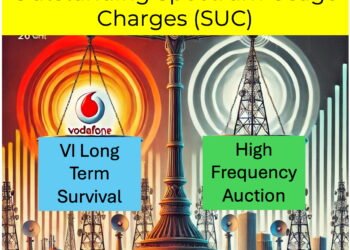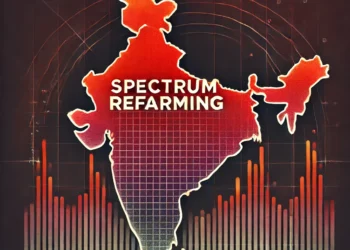The Past
In past spectrum was not charged at the market rate but came bundled with the license. Hence, the DoT levied spectrum usage charge (SUC). It was a percentage of the total adjusted gross revenue (AGR) and the % rate increased linearly with the quantum of spectrum held by the operator. This resulted in operators paying spectrum usage charge, anything between 2% to 6%, depending upon the quantum of spectrum held by them individually – starting from a minimum of 4.4 MHz for GSM and 2.5 MHz for CDMA.
In 2008, CDMA operators on payment of an additional Rs 1600 Crores were allowed GSM spectrum under the dual technology license. The upfront fee was charged as was determined in the year 2001 for the auctions held of the 4th cellular license. At that time, GSM and CDMA spectrum were treated differently. Hence, the GSM operator paid SUC @% of total AGR determined by the total quantum of GSM spectrum held by them. On the other hand, the dual technology operator (with both CDMA and GSM spectrum) paid SUC @% of AGR streams emanating from its GSM and CDMA businesses individually, and the rates applicable was determined by the quantum of GSM and CDMA spectrum held by it separately. Since the % SUC rates (proportional to the quantum of spectrum held) were approximately same for both CDMA and GSM technologies, the dual technology operators end up paying approximately half compared to its GSM counterpart even though the total spectrum held by both were approximately equal. However, unlike the GSM operator, the dual technology operator had to pay an upfront license fee for the 2nd time though at a value determined 8 years back (in 2001). To understand this situation let us assume that a dual technology operators had 5 MHz of CDMA spectrum and 4.4 MHz of GSM spectrum – a total of 9.4 MHz vs 10 MHz that of the GSM operator. Let the revenue emanating out of CDMA and GSM business (of dual technology operator) be X & Y respectively, and hence the SUC applicable would have been = X*2%+Y*2% vs that of GSM operator’s (X+Y)@4%.






